hello need to reflect over the weekend.
-- JaymievieveAng? - 07 Apr 2005
Located in the Piazza della Santissima Annunziata is an archetypal Renaissance building. Brunelleschiís colonnade (1419-26) for the Spedale degli Innocenti is an example of Classical design. The Spedale (hospital) is named after Herodís biblical Massacre of the Innocents following the birth of Jesus. It opened in 1444 as Europeís first orphanage and is a major social monument. Many of its orphans took the last name of Innocenti and you will find many of their names in the phonebook. UNICEF, the United Nations Childrenís Fund also has offices there.
Brunelleschiís round arches gave rise to the Classical style widely copied by Renaissance architects.
* facade:
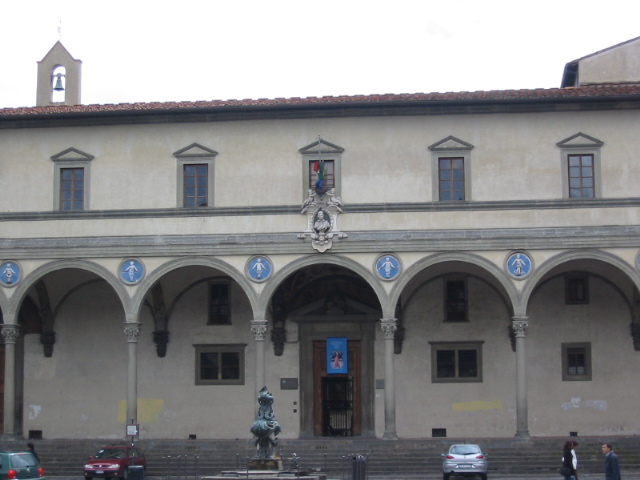 Brunelleschiís arcaded loggia is decorated with terracotta roundels of babies in swaddling bands, added by Andrea della Robbia in 1487, reflect the buildingís function as an orphanage.
* swaddling:
Brunelleschiís arcaded loggia is decorated with terracotta roundels of babies in swaddling bands, added by Andrea della Robbia in 1487, reflect the buildingís function as an orphanage.
* swaddling:
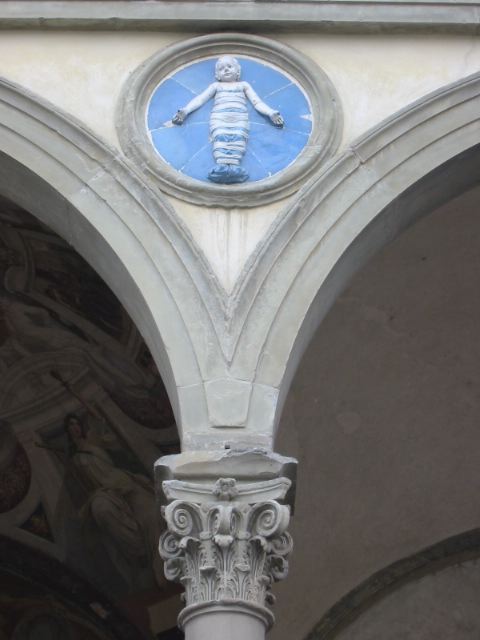 At the left-hand end of the portico is the rota, a rotating stone cylinder on which mothers could place their unwanted children anonymously and ring the orphanage bell. The stone was then turned around and the child was taken in.
At the left-hand end of the portico is the rota, a rotating stone cylinder on which mothers could place their unwanted children anonymously and ring the orphanage bell. The stone was then turned around and the child was taken in.
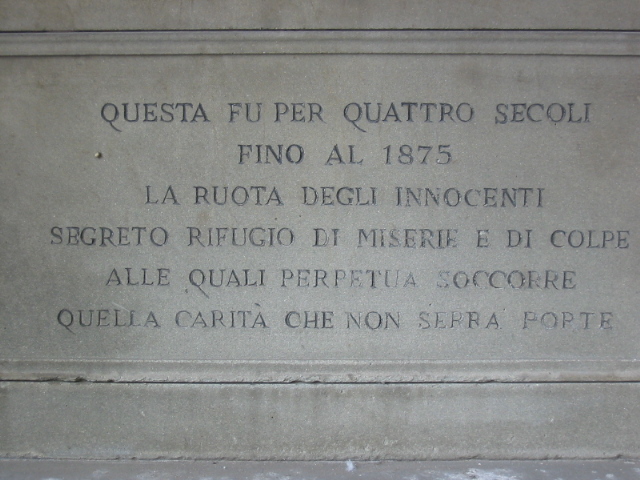
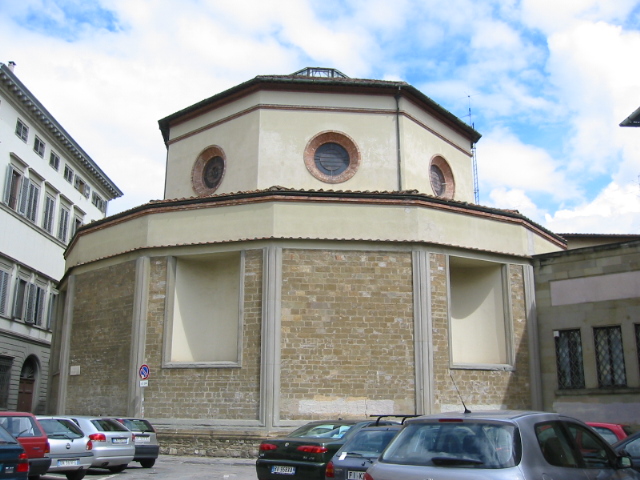 Brunelleschiís last great project was the Church of Santo Spirito begun in 1436 but was never finished due to lack of funds. Brunelleschi had intended that the faÁade of Sant Spirito should face the Arno, but this scheme was altered; so too was his plan to express the curved shape of the side chapels by an undulating exterior, and his idea of having four doors instead of the traditional three; these changes were made by the architects who completed the church after Brunelleschiís death.
Brunelleschiís last great project was the Church of Santo Spirito begun in 1436 but was never finished due to lack of funds. Brunelleschi had intended that the faÁade of Sant Spirito should face the Arno, but this scheme was altered; so too was his plan to express the curved shape of the side chapels by an undulating exterior, and his idea of having four doors instead of the traditional three; these changes were made by the architects who completed the church after Brunelleschiís death.
 Copyright &© by the contributing authors. All material on this collaboration platform is the property of the contributing authors.
Copyright &© by the contributing authors. All material on this collaboration platform is the property of the contributing authors.
Ideas, requests, problems regarding TWiki? Send feedback
 Brunelleschiís arcaded loggia is decorated with terracotta roundels of babies in swaddling bands, added by Andrea della Robbia in 1487, reflect the buildingís function as an orphanage.
* swaddling:
Brunelleschiís arcaded loggia is decorated with terracotta roundels of babies in swaddling bands, added by Andrea della Robbia in 1487, reflect the buildingís function as an orphanage.
* swaddling:  At the left-hand end of the portico is the rota, a rotating stone cylinder on which mothers could place their unwanted children anonymously and ring the orphanage bell. The stone was then turned around and the child was taken in.
At the left-hand end of the portico is the rota, a rotating stone cylinder on which mothers could place their unwanted children anonymously and ring the orphanage bell. The stone was then turned around and the child was taken in.
- la routa:
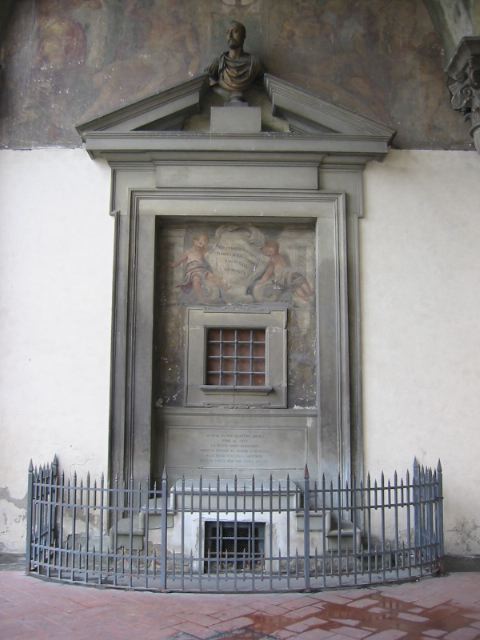
- inside:
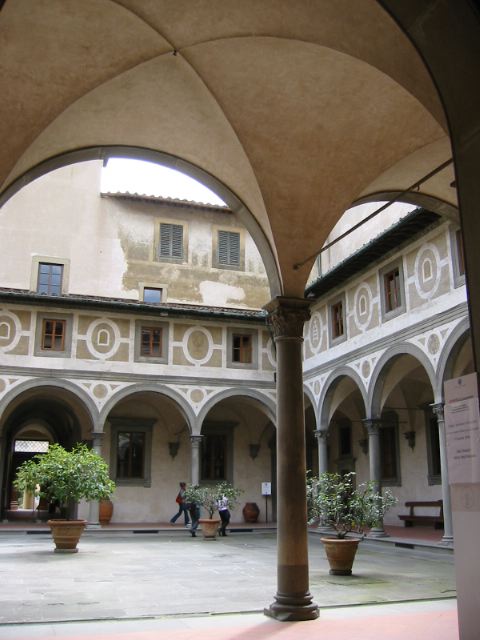
- facade2:
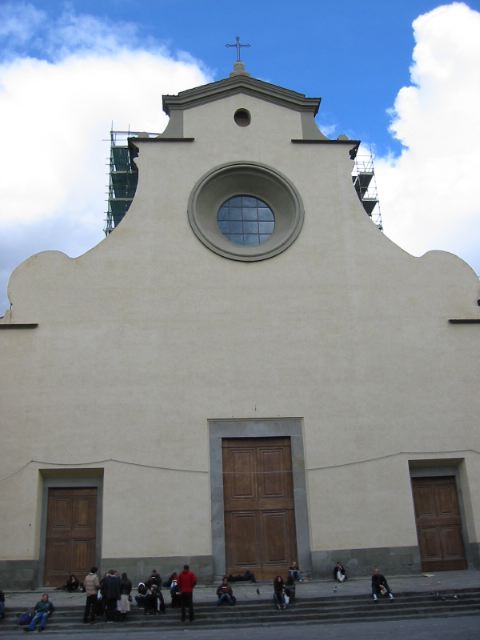
- windows:
- gates:

- bronze2_J-Ang.doc: early bronze tech. sources + mrc comment
Ideas, requests, problems regarding TWiki? Send feedback